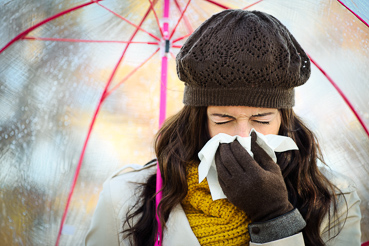Concussion and Halloween Safety
Q13 interviews Dr. Alexander Hamling about Concussion and Halloween Safety.
Are you ready for cold and flu season?

The excitement of the start of the school year, football season and fall activities can be quickly dampened by a cold or flu. Every parent dreads their child getting sick; it means missing work and school and, more drastically, requiring a visit to the doctor. Worst of all, it may mean that your whole family winds up getting sick. Luckily, I have some prevention tips to help keep you and your children healthy this cold and flu season.
Cold vs. Flu
First, a little refresher. Colds and flu are caused by viruses, not bacteria. There are hundreds of different viruses that cause colds; flu is caused by the influenza virus. Antibiotics won’t work to treat colds or flu because antibiotics kill bacteria, not viruses.
Viruses are easily spread between people who spend significant time in close contact such as those in schools, daycares and offices. They’re typically spread by contact with an infected surface such as a doorknob or drinking fountain handle or person-to-person by direct contact. Most viruses are not airborne.
It is sometimes difficult to tell the difference between a cold and the flu. Both can cause a range of symptoms, including fever, runny nose, sore throat, cough and fatigue. In general, however, flu tends to hit harder, have higher fever and include body aches and nausea.
Prevention
While this all may sound like bad news, you can do a lot of things to help prevent you and your family from catching a cold or flu this season.
- Hand washing: Although you’ve heard it many times before, it bears repeating: good handwashing is the number one way to protect yourself from getting sick. Scrub for at least 20 seconds to stop those nasty germs from spreading.
- Flu vaccine: The flu vaccine adds a layer of protection. Everyone over the age of 6 months should get a flu shot. While it won’t keep you from getting a common cold, it will help protect you from the flu. What’s new this year is that nasal sprays are not recommended because they have been determined to not be effective enough to fight this year’s flu strain.
- Avoid people who are sick: This helps to prevent the spread of germs. If your child is sick, they should stay home from school. Encourage them to cough or sneeze into a tissue or into the crook of their elbow instead of their bare hands.
- Sleep: Your body needs good sleep for a healthy immune system. Toddlers/preschoolers should get 11-13 hours a night, young school-age kids need 10-12 hours, “tweens” 9-10 hours and teens 8-9 hours. And don’t neglect yourself! Try to clock in 7-8 hours every night.
- Eat well: One of the easiest ways to keep you and your children healthy is to maintain a well-balanced diet of healthy protein, some carbs, limited fat and sugar, and plenty of fruits and vegetables. A proper diet will help rebuild cells and give you energy and essential vitamins needed for a strong immune system.
Treating a Cold or Flu
So, you’ve followed this to a T—and someone still gets sick. At this point, all you can do is help manage symptoms and support the immune system in doing its job. Despite our best efforts, we’ll all catch a virus at some point, kids more often than adults: they average a whopping 6-8 colds a year.
Aches and fevers in older infants and children can be treated at home with acetaminophen (Tylenol) or ibuprofen (Motrin, Advil). Be sure to check the label for the proper dosing. If a fever is greater than 100 degrees and lasts longer than a few days or if other symptoms are severe, you should make an appointment to see your child’s doctor.
Keep your child home from school until the fever has subsided. A mild cough and/or sniffles may persist for several days, but it is okay to go back to school as long as they’re generally feeling better.
To recap, ensure you and your family wash their hands, get their flu shot, avoid others who are sick, eat well and get plenty of rest. If you follow these simple tips, you can prevent or minimize family members from getting sick this cold and flu season.



